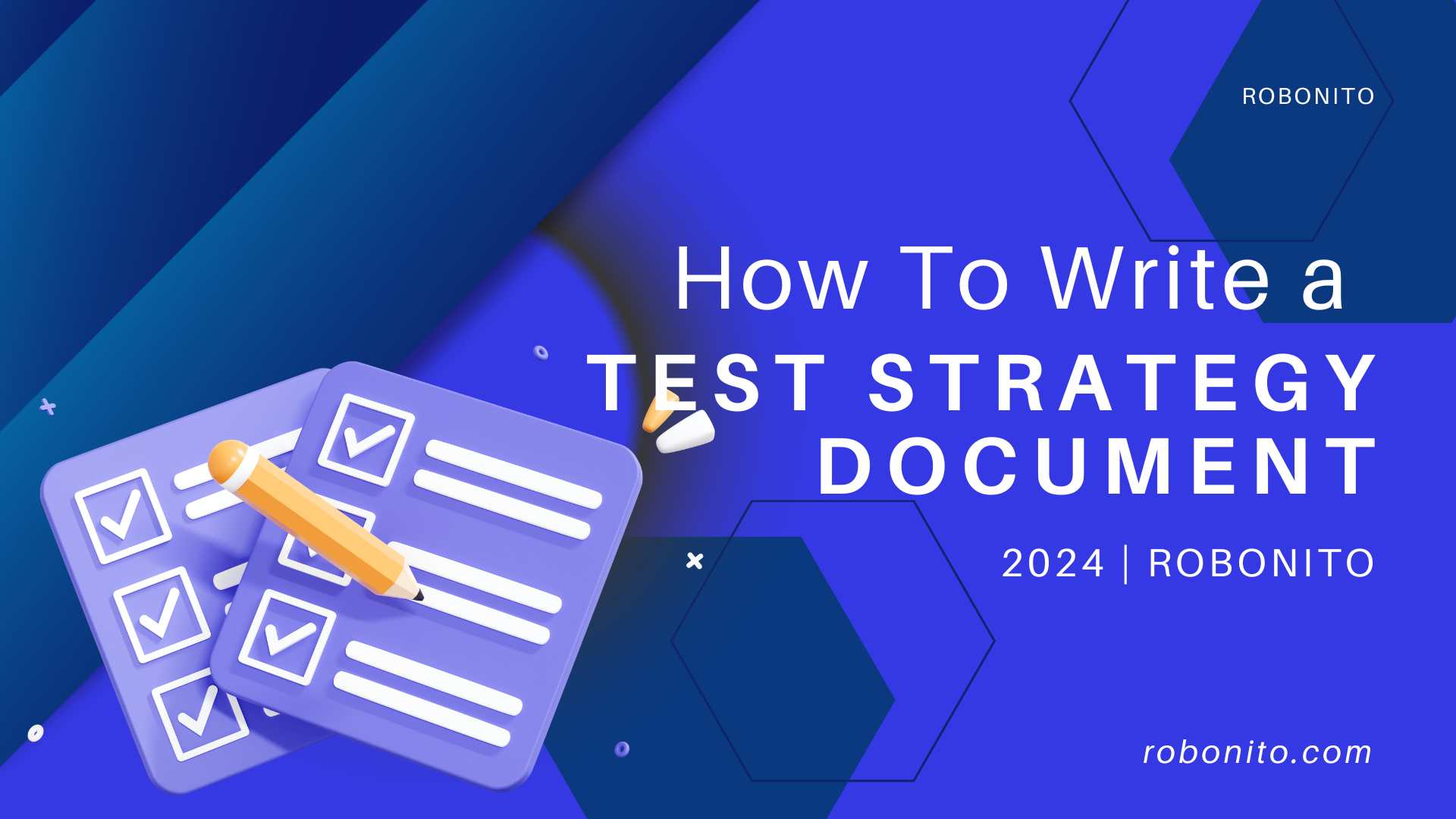Ensuring the quality and reliability of software products is paramount. Adopting effective testing strategies aligned with development goals and business objectives is crucial for success. A well-defined software test strategy document serves as a guide for testing efforts, fostering a unified understanding among stakeholders. This comprehensive guide explores various testing approaches, types of strategies, and provides step-by-step guidance on creating an effective test strategy document.
A Brief Explanation of the Software Testing Strategy Document
A software testing strategy document is a comprehensive plan outlining the testing approach, goals, scope, resources, and timelines for a software project. Acting as a reference for all testing stakeholders, this document ensures a unified understanding of the overall testing strategy. It clarifies testing scope, types of testing, deliverables, and criteria for test completion.
Diverse Approaches to Testing Strategy

1. Analytical Approach
Analyze requirements, risks, and critical functionalities to determine testing scope and prioritize activities accordingly.
2. Model-Based Approach
Utilize modeling techniques to create test models representing system behavior, interactions, and expected outcomes.
3. Regression-Based Approach
Focus on ensuring modifications do not introduce defects or impact existing functionalities, validating system stability after changes.
4. Risk-Based Approach
Direct testing efforts to high-risk areas based on impact, probability, and criticality, optimizing resource allocation.
5. Agile Testing Strategy
Aligns with Agile methodology, emphasizing iterative testing throughout development, fostering continuous feedback.
6. Exploratory Testing Strategy
Involves testers actively exploring the application, focusing on learning and investigation in real-time.
7. User-Centric Testing Strategy
Places end-users at the center, simulating real-world scenarios to validate usability, accessibility, and overall user experience.
8. Compliance-Based Testing Strategy
Ensures software meets regulatory standards and industry-specific guidelines, crucial in industries like healthcare and finance.
9. Continuous Testing Strategy
DevOps and Agile-oriented approach emphasizing integrating testing throughout the development lifecycle.
10. Crowdtesting Strategy
Involves a community of external testers to test software across various devices and platforms, providing diverse user perspectives.
How a Test Strategy Document Enhances Project Outcomes

Creating a test strategy document offers several benefits for software development projects:
Clear Direction
Provides a clear roadmap for testing efforts, ensuring alignment among team members.
Efficient Resource Utilization
Outlines required resources such as personnel, tools, and environments, optimizing the testing process.
Risk Mitigation
Identifies potential risks and mitigation strategies, enabling proactive risk management.
Test Coverage and Quality
Ensures comprehensive test coverage, addressing both functional and non-functional aspects, leading to higher software quality.
Enhanced Communication
Serves as a communication tool, promoting collaboration and transparency among team members.
Key Components of a Software Testing Strategy Document Template
Test Objectives
Clearly defining goals and objectives aligned with the project's overall objectives.
Testing Scope
Specifying testing boundaries, including features, functionalities, platforms, and environments.
Test Approach
Outlining the high-level strategy and techniques to be employed during testing.
Test Deliverables
Enumerating artifacts and documentation produced during the testing process.
Test Schedule and Timeline
Providing a timeline for testing activities, milestones, dependencies, and estimated effort.
Resource Allocation
Specifying resources required for testing, including personnel, hardware, software, and tools.
Risk Assessment
Identifying potential risks and mitigation strategies associated with testing.
Test Environment
Describing the necessary test environment setup, including hardware, software, network configurations, and data requirements.
Exit Criteria
Predefined conditions for concluding the testing process, such as specific defect density thresholds or completion of predefined test cases.
Steps to Develop a Software Testing Strategy Document

Step 1: Define the Testing Goals and Objectives
- Clearly define goals and objectives aligned with project requirements and business goals.
Step 2: Identify the Testing Scope
- Define testing boundaries, including modules, functionalities, test levels, and types of testing.
Step 3: Determine the Testing Approach
- Choose appropriate testing approaches and techniques based on project requirements, complexity, and development lifecycle.
Step 4: Specify the Test Environment and Infrastructure
- Identify hardware, software, and network configurations needed for testing, and plan their procurement or setup.
Step 5: Define the Test Data Management Strategy
- Establish guidelines for test data creation, identification of data dependencies, and data management practices.
Step 6: Outline the Test Execution and Reporting Process
- Detail test execution methodology, reporting formats, metrics, and key performance indicators.
Step 7: Develop the Test Automation Strategy Document
- Identify areas suitable for test automation, choose tools, define frameworks, and allocate resources.
Step 8: Address Risks and Mitigation Strategies
- Identify potential risks and challenges in the testing process, devise mitigation strategies.
Step 9: Define Test Deliverables and Exit Criteria
- Specify expected test deliverables and conditions for concluding the testing process.
How HeadSpin Empowers Organizations to Enhance Their Testing Strategy
1. Global Device Infrastructure
- Provides access to an extensive global device infrastructure for testing on real devices worldwide.
2. Test Automation
- Offers robust test automation capabilities, integrating with popular frameworks and tools.
3. Performance Testing at Scale
- Excels in providing performance testing at scale, simulating high volumes of user traffic and real-world network conditions.
4. AI-driven Insights and Analytics
- Leverages AI and machine learning to provide actionable insights for software testing.
5. Collaborative Platform
- Provides a centralized platform for effective collaboration among team members involved in the testing process.
Conclusion
Creating a well-defined software testing strategy document is essential for achieving successful testing outcomes and delivering high-quality software. By following the best practices outlined in this comprehensive guide, teams can navigate the complexities of testing and contribute to the overall success of software development projects.
